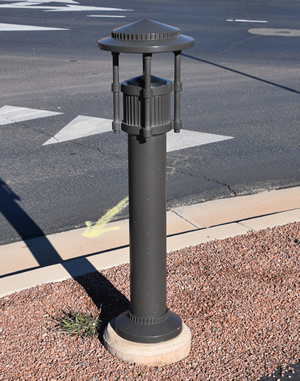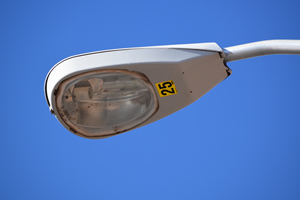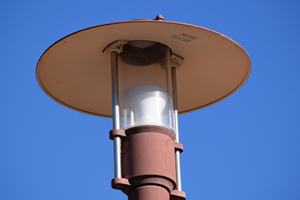The color temperature of outdoor lighting has become a big deal in the past few years. LED technology has given us incredible energy efficiency. But more and more we are learning that this benefit comes at a cost: Too much glare, too bright, to much harmful blue wavelength emissions, and more. The old technology these LEDs are replacing, low- and high-pressure sodium lights, don’t have any of those problems.
The current outdoor lighting ordinance in Ivins sets a maximum color temperature of 4,000 degrees kelvin. Our ordinance is very dark sky friendly, and at the time it was implemented in 2007 it was probably a model of dark sky friendliness.
But time moves on. The “gold standard” today is to install lighting with a color temperature no more than 3,000 degrees kelvin. That is the requirement for designation as a Dark Sky Community by the International Dark Sky Association (IDA).
But some argue that 3,000k is still too high. For more information, see articles by Christian Luginbuhl, a retired scientist from the United States Naval Observatory in Flagstaff at the Flagstaff Dark Skies Coalition.
So, last night we went out to measure the color temperature of some outdoor lighting in Ivins. We were accompanied by Rob Roush of Red Earth Development. He is developing the Red Desert subdivision in Ivins next to the Reserve. He contacted us last month because he wants to maximize the dark sky friendliness of his project and has been searching for answers about appropriate color temperatures for his development’s outdoor lighting.
Technological improvements are great, but they can create more work, especially for those who pay attention. Color temperature is something nobody ever had to pay much attention to.
First, a disclaimer. Our outing last night is just a preliminary step. We need to do a lot more research, especially since the results we got raised some questions. But it was eye-opening.
We used a high-end spectrometer, the AsenseTek Lighting Passport. It’s an expensive little device that costs about $2,000. It communicates with an app on your cellphone. We were fortunate to be able to borrow it from IDA.

We measured some of the bollards on the west side of Rocky Vista University on 200 N. The spectrometer reading as under 1,600k for these. We’ll have to doublecheck with the City, but we believe the light source is an LED rated at well over 2000k.
City staff told us they added a “lens” to these lights that seems to lower the color temperature. But that’s still a big difference. It may be caused by the light source bouncing off a bowl shaped dome, and the dome’s color lowering the color temperature. Well, there’s some homework.

The color temperature of one of the city’s cobra lights was 1,851k. The light source in cobras is typically high pressure sodium. But they are slowly being replaced by LEDs.
We measured a number of other lights and got similarly low color temperature readings. Maybe the app we downloaded didn’t like our android phone. So Rob downloaded the app on his iPhone. He got the same readings.

For example, the newer post top lantern lights the City is installing were around 1,800k using both phones. We were expecting higher readings.
Maybe the AsenseTek spectrometer was giving us incorrect readings. That seemed unlikely. It’s an expensive, professional device.
But we were still concerned. Maybe we were measuring incorrectly. We tested that by taking a meter reading right next to the light source and a reading a number of feet away from the light source. We got the same result. That’s how it should be. We are measuring the color temperature of the light, not the amount of light, or illumination.
So we continued. The Veterans Center has parking lot lights that read just over 1,700k. These appear to be sodium lights. And it looks like a few were fluorescent, which came in at close to 3,000k. These readings made sense.
Similarly, the parking lot lights at Rocky Vista University registered around 4,000k. That also made sense. These are LED lights and our current ordinance allows lighting up to 4,000k. We found other parking lot lighting that had even higher kelvin readings, some close to 5,000k and some even higher. These were probably installations that predated our current ordinance.
Why go to all this effort? If we are going to recommend changes to the city’s outdoor lighting ordinance, we need to understand what lighting in the city might look like in the future.
This was a first step, and it certainly wasn’t a giant leap for Ivinkind, but at least it’s a start. We have some homework to do with IDA, AsenseTek, and the City.
If you have any expertise in lighting issues, we would value your input. Let us know if you are willing to help by emailing us from the Contact us page.
